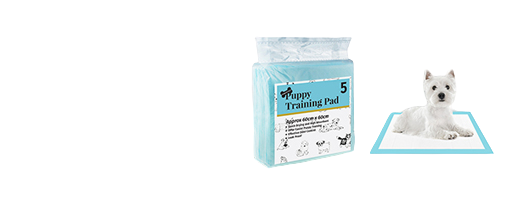
Disposable Sanitary Pads: Convenience and Considerations
2024-10-19 22:00
Disposable Sanitary Pads: Convenience, Considerations, and Sustainable Alternatives
Sanitary pads have become an indispensable product for menstruating individuals worldwide, offering convenience, comfort, and reliability during menstrual cycles. As one of the most widely used menstrual hygiene products, sanitary pads have evolved significantly over the years, catering to diverse needs and preferences. However, while they provide numerous benefits, there are also environmental and health considerations that users should be aware of. This article explores the advantages and drawbacks of disposable sanitary pads, highlights their environmental impact, and discusses sustainable alternatives for conscious consumers.
The Convenience of Disposable Sanitary Pads
One of the primary reasons for the widespread popularity of disposable sanitary pads is their convenience. They are designed to be easy to use, readily available, and adaptable to different menstrual flows.
Accessibility:
Disposable sanitary pads are widely available in supermarkets, pharmacies, and online stores, making them accessible to almost everyone. Their widespread availability ensures that users can easily purchase them whenever needed.Variety of Options:
Modern sanitary pads come in a range of sizes, thicknesses, and absorbency levels, catering to individual preferences and needs. Whether for light, moderate, or heavy flows, there is a disposable pad designed to provide optimal protection and comfort.Ease of Use:
Disposable sanitary pads are simple to use and dispose of, making them a hassle-free option for many individuals. Their adhesive backing ensures they stay securely in place, providing confidence and comfort throughout the day.
Hygiene and Comfort: Key Features of Sanitary Pads
Disposable sanitary pads are designed with hygiene and comfort in mind, incorporating advanced materials and technologies to enhance the user experience.
Soft and Skin-Friendly Materials:
The top layer of sanitary pads is typically made from soft, non-irritating materials that feel gentle against the skin. This helps prevent chafing, rashes, and discomfort, even during extended wear.Absorbent Core Technology:
The absorbent core of sanitary pads is designed to quickly lock away menstrual fluid, reducing the risk of leaks and keeping users feeling dry and comfortable. Many pads also feature moisture-wicking layers to further enhance comfort.Odor Control:
Some sanitary pads include odor-neutralizing agents or fragrances to help users feel fresh and confident throughout the day. However, these additives may not be suitable for everyone, as they can cause skin sensitivities in some individuals.
Environmental Impact of Disposable Sanitary Pads
Despite their convenience and effectiveness, disposable sanitary pads have a significant environmental footprint. The production, use, and disposal of these products contribute to several environmental challenges.
Landfill Waste:
Disposable sanitary pads are single-use products, meaning they are discarded after each use. This generates a substantial amount of waste, as most pads are made from non-biodegradable materials like plastic. It is estimated that a single menstruating individual may use thousands of disposable pads in their lifetime, contributing to long-term landfill accumulation.Resource Consumption:
The production of sanitary pads requires significant amounts of water, energy, and raw materials. The manufacturing process also involves the use of chemicals and synthetic materials, which can have environmental consequences.Microplastic Pollution:
Many disposable sanitary pads contain plastic components that can break down into microplastics over time. These microplastics can enter ecosystems, harming wildlife and contaminating water sources.
Health Considerations: Chemicals in Sanitary Pads
While sanitary pads are generally safe for use, some individuals may experience sensitivities or allergic reactions due to the chemicals and additives used in their production.
Fragrances and Dyes:
Some sanitary pads contain fragrances or dyes to enhance their appeal. However, these additives can cause skin irritation, itching, or allergic reactions in sensitive individuals.Chlorine Bleaching:
Certain pads are bleached with chlorine to achieve a clean, white appearance. This process can produce trace amounts of dioxins, which are harmful chemicals linked to health risks.Lack of Transparency:
Not all manufacturers disclose the full list of ingredients used in their sanitary pads, making it difficult for consumers to make informed choices about the products they use.
Sustainable Alternatives to Disposable Sanitary Pads
As awareness of the environmental and health impacts of disposable sanitary pads grows, many individuals are exploring sustainable alternatives. These options not only reduce waste but also offer long-term cost savings and health benefits.
Reusable Cloth Pads:
Made from soft, washable fabrics like cotton or bamboo, reusable cloth pads are an eco-friendly alternative to disposable sanitary pads. They can be washed and reused multiple times, significantly reducing waste.Menstrual Cups:
Menstrual cups are made from medical-grade silicone or rubber and can be reused for several years. They are inserted into the vagina to collect menstrual fluid, offering a leak-free and sustainable option.Biodegradable and Organic Pads:
Some brands now offer disposable sanitary pads made from biodegradable or organic materials, such as bamboo or plant-based fibers. These pads are designed to break down more easily in the environment, reducing their long-term impact.
Making Informed Choices: Balancing Convenience and Sustainability
While disposable sanitary pads remain a popular choice for their convenience and effectiveness, it is important for consumers to consider their environmental and health impacts. By making informed choices, individuals can balance their need for comfort and reliability with their commitment to sustainability.
Choose Eco-Friendly Options:
Opt for biodegradable or organic sanitary pads if available, as these products are designed to minimize environmental harm.Explore Reusable Alternatives:
Consider trying reusable cloth pads or menstrual cups to reduce waste and save money in the long term.Support Transparent Brands:
Look for brands that prioritize transparency and disclose the materials and ingredients used in their sanitary pads.
Conclusion: The Future of Sanitary Pads
Disposable sanitary pads have revolutionized menstrual hygiene, offering convenience, comfort, and reliability to millions of users worldwide. However, their environmental and health impacts cannot be ignored. As consumers become more conscious of these issues, the demand for sustainable alternatives is growing, driving innovation and change in the menstrual hygiene industry.
By choosing eco-friendly options, exploring reusable products, and supporting transparent brands, individuals can make a positive impact on both their health and the environment. The future of sanitary pads lies in balancing convenience with sustainability, ensuring that menstrual hygiene products meet the needs of users while protecting the planet for generations to come. Through informed choices and collective action, we can create a more sustainable and inclusive future for menstrual care.
Get the latest price? We'll respond as soon as possible(within 12 hours)















